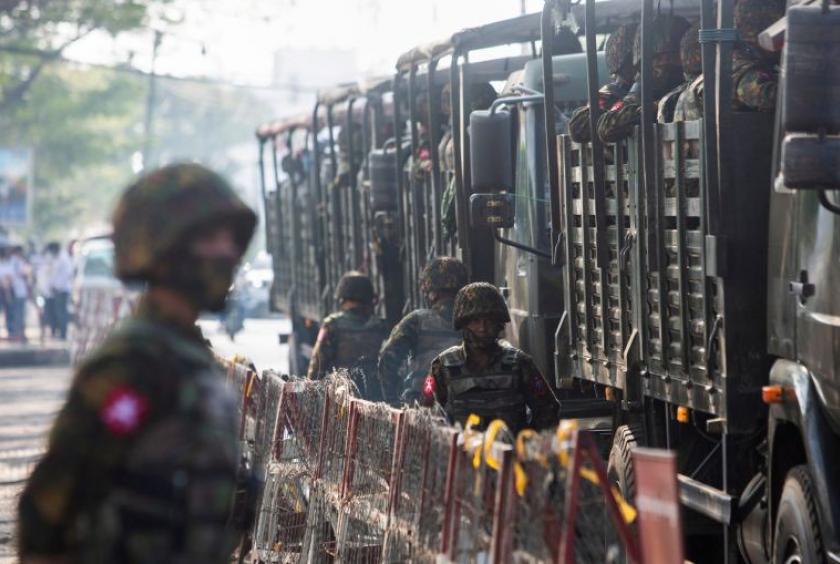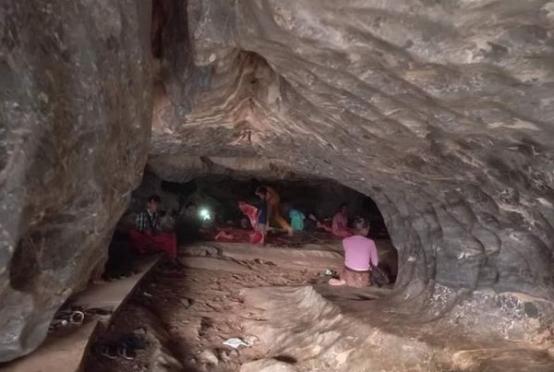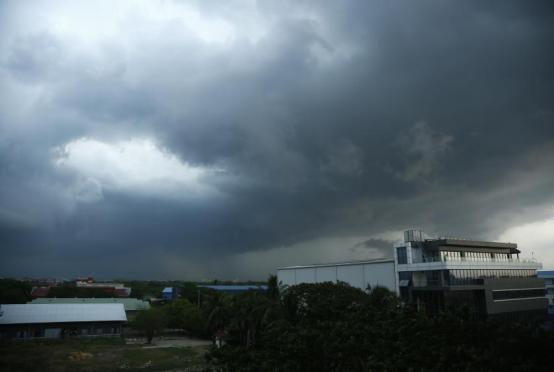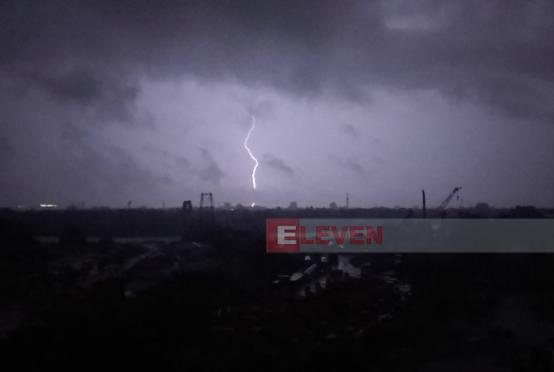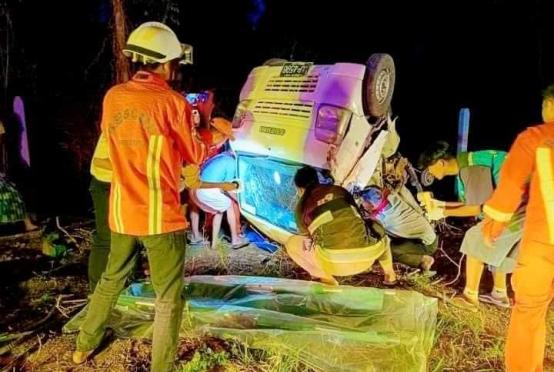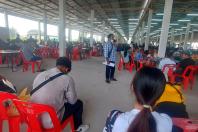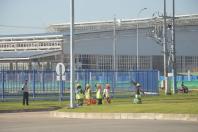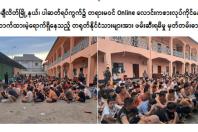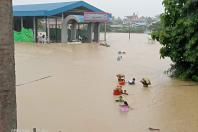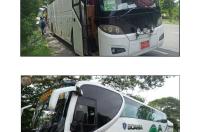BANGKOK - If it had not been for the military takeover on Feb 1st, 26-year-old Mr Aung would still be running a small clinic in Myanmar with a fellow doctor. These days, however, he spends his time plotting how to ambush soldiers, to "take care" of military informers and to intimidate civilian administrators working for the regime.
"We'd send them warnings with bullets stating that they should flee rather than work under the regime and we'd give a window of opportunity for them to flee," he tells The Straits Times through an intermediary. "If they keep working… we have no other choice."
Mr Aung, who withheld his full name for obvious reasons, is a member of Yesagyo People's Defence Force (PDF), one of the estimated 170 groups across Myanmar waging an insurgency against the military government which ousted the civilian National League for Democracy (NLD) government.
The ruling military has condemned those in the PDFs as terrorists. Over the past week, it has intensified its crackdown on the resistance in Yangon as well as Kayin state, which is known to host thousands of anti-military dissidents. Given the military's history of meting collective punishment, locals expect these operations to send villagers fleeing, and swell the 189,000-strong population displaced from their homes since the coup.
In a presentation to diplomats on Friday (Aug 27), the ruling military exhibited photographs of seized explosives and claimed the "PDF terrorists" were working "under the manipulation of NLD extremists". It also pointed to the National Unity Government (NUG), a rival Cabinet comprising ousted lawmakers and their allies which is competing with the ruling military for international recognition.
Yet only about a quarter of all PDFs are linked to the NUG chain of command, according to political analyst Min Zin. The rest of the PDFs are semi-autonomous, comprising civilians who received training stints of a month or more from armed ethnic groups. Many raise their own funds. Most also have only enough weapons and training for guerilla warfare, rather than a full-scale military conflict.
Mr Aung describes an organic leadership independent of the NUG. "It's a collective decision-making process," he tells ST. "We've formed a mini PDF alliance with PDFs from nearby regions. Before any action is taken, we have a meeting with alliance members."
PDFs are putting increasing pressure on junta forces. They pose the biggest threat to troops and police officers in central Myanmar because security presence there is light, says security analyst Min Zaw Oo.
On Tuesday (Aug24), a group called the People's Defence Force Gangaw based in the central region of Magwe said it killed 21 troops with a landmine triggered by a passing military vehicle. Another PDF in Kalay, Sagaing region, announced via Facebook that it killed three soldiers on Aug 12. It is difficult to independently verify these figures, though many PDFs upload photos and videos of their operations online as proof.
Insurgency is brewing in Myanmar's biggest cities too. On Aug 14, unidentified attackers shot and killed five police officers guarding a train in Yangon. Graphic pictures of the corpses were circulated widely on social media. Three days earlier, a soldier was gunned down outside a Mandalay administration office he was guarding, reported Myanmar Now news outlet.
These attacks are taking place amid a months-long campaign by pro-democracy activists to stop paying taxes, as well as shun and shame military-appointed administrators to deny legitimacy to the regime.
The NUG has been urging soldiers and police officers to defect. It has promised that they would be able to keep their ranks and pensions if they cross over. On Wednesday, 320 defecting police officers formed the self-declared Karenni State Police force to provide security for locals in Kayah state, eastern Myanmar.
The conduct of PDFs, however, falls into a grey area on which there appears to be no consensus.
NUG's deputy minister of foreign affairs Moe Zaw Oo stressed during a press conference on Tuesday: "Our PDFs are told to follow the rules of engagement, codes of conduct, the Geneva Convention and international humanitarian law. Not attacking or harming civilians is a very important rule for us."
But PDFs, which say they are ready to heed NUG's instructions even though they are not in contact with it, admit to ST that they have killed ruling military administrators.
"We tried to kill three guys. One of them did not die, he just got hurt," a 25-year-old member of a PDF called the Mandalay Special Task Force, who wanted to be known as Mr Tha Kin Saw Kyaw, told ST. "We need justice and democracy."
Mr Aung, meanwhile, calls "handling" military informers, termed locally as "dalan", his "first priority". "Protesters who are captured because of those informants always end up dying through excruciating torture and beatings," he says.
Mr Aung did not say exactly how they dealt with a dalan. He also did not answer when asked how they ascertained if someone is a real informer before taking action.
On Saturday, an alleged military collaborator was found beheaded in Sagaing region, reported Khit Thit News. It is unclear who was responsible for his death.
Supporters argue that military collaborators are fair game, given the scale of alleged military atrocities against erstwhile peaceful anti-takeover protesters. They also allege that the ruling military has activated a paramilitary group called Pyusawhti to contain resistance. Shortly after this group published a hit list of NLD members in June, threatening to take action against them for any attacks on state facilities or staff, two people on the list were gunned down in their own home. According to human rights group Assistance Association for Political Prisoners, over 1,000 people have been killed by the ruling military since the takeover.
Still, there are concerns over the killing of unarmed civilians without due process. Even some who have condemned the takeover have expressed reservations. Asked about this issue, Padoh Saw Taw Nee, head of foreign affairs of ethnic armed group Karen National Union, told ST: "We really need to be very careful about it."
While the PDF movement poses a security threat to the ruling military, "it has not reached the point of a strategic level threat", says Dr Min Zaw Oo. To do that, Myanmar's most powerful ethnic armed groups would have to unite against the military - something they have shown very little inclination to do.
Meanwhile, the NUG appears to be sending conflicting signals to PDFs. In June, it called people to prepare for a "D-Day" of action. Asked on Tuesday about it, NUG minister Moe Zaw Oo said: "Every day is D-Day".
Young PDF fighters, in the meantime, have learnt to temper their expectations.
"The first time they announced D-Day, we all thought we had to conduct an all-out war," said Mr Aung. "We rushed to gather all the ammunition and manpower we could and waited at a post near the jungle. The next day came and nothing happened. And then the next day and the next day. So we've come to realise that it might be a hoax."
In the absence of clear direction, Myanmar looks headed for a prolonged armed conflict as the ruling military and disparate resistance groups face off both in the light and shadows.

